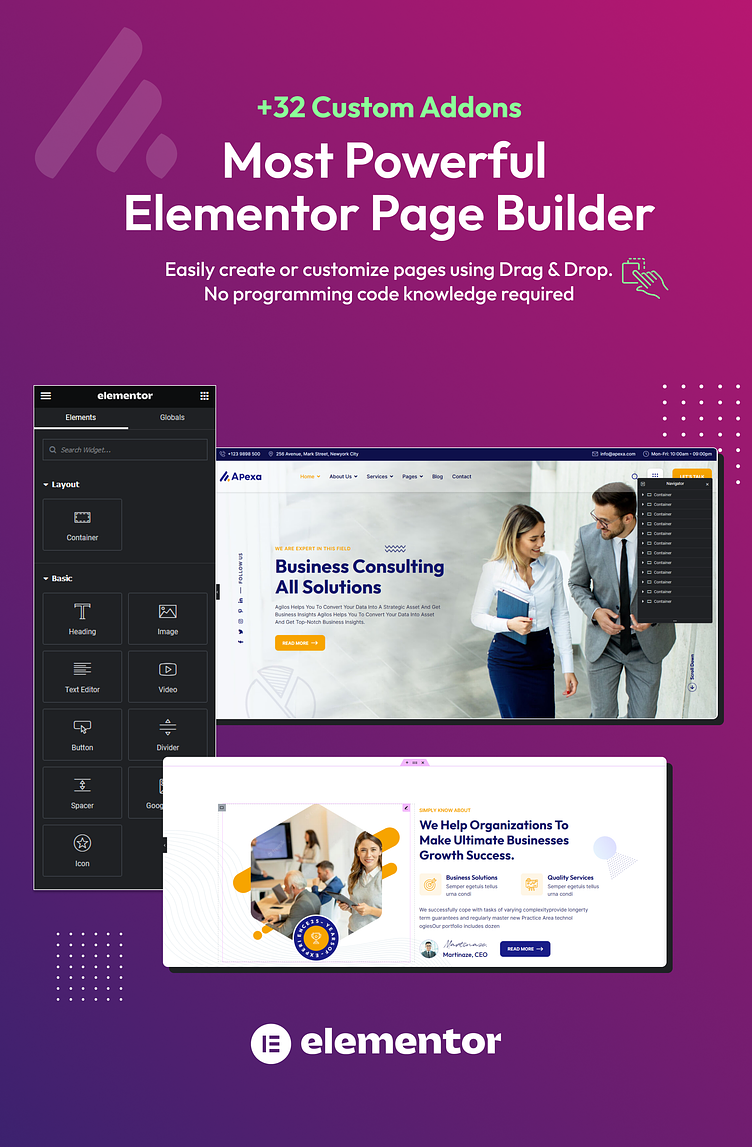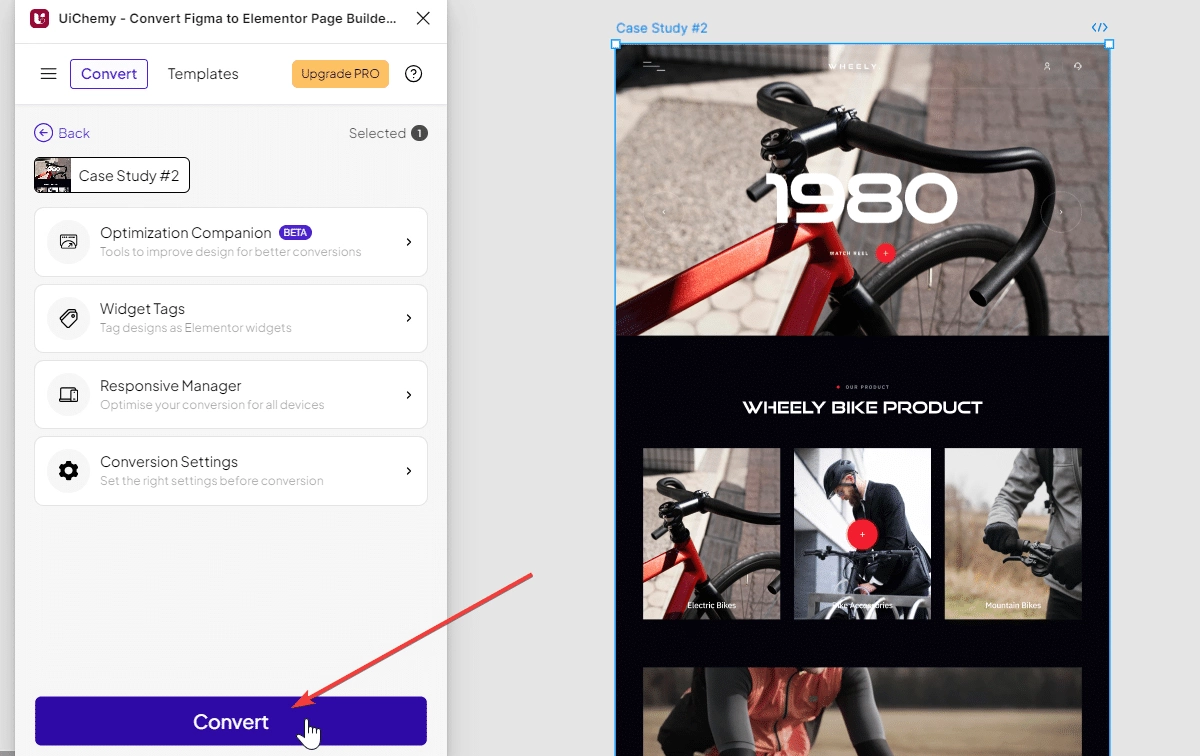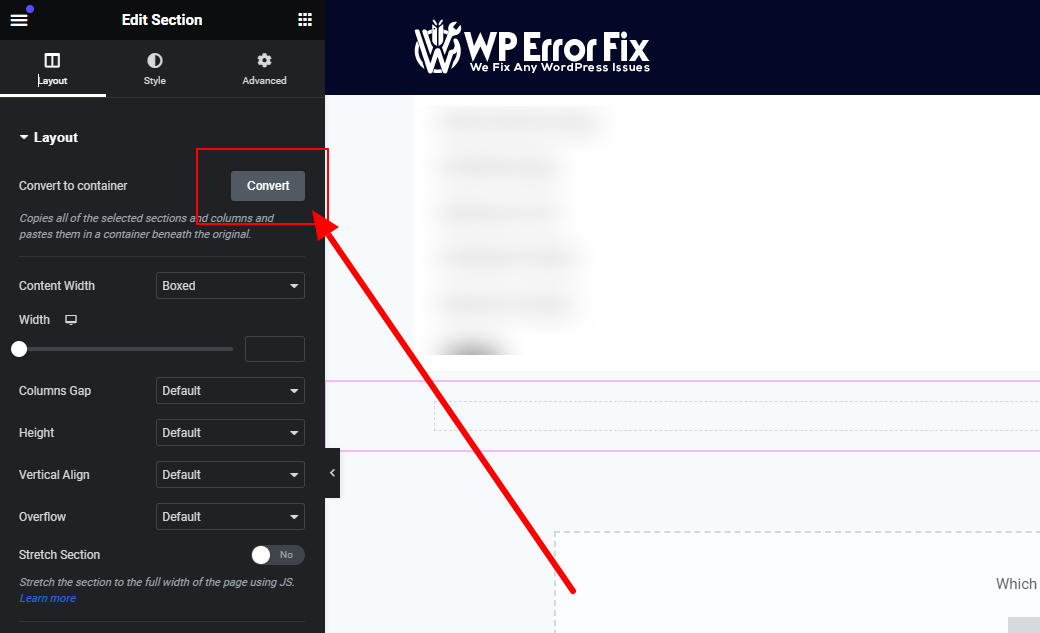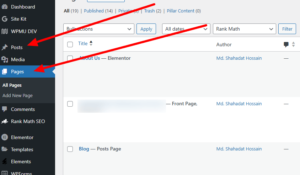The Elementor ‘No Convert Button’ issue may occur due to plugin conflicts or outdated versions. Ensure all plugins and themes are updated to resolve it.
Elementor is a popular WordPress page builder plugin that offers a range of design and customization options. Users sometimes encounter issues where the convert button does not appear, which can be frustrating. Updating all plugins, themes, and Elementor itself can often resolve this issue.
Checking for conflicts with other plugins is also crucial. Deactivating plugins one by one can help identify the culprit. Ensuring your website meets Elementor’s system requirements can also prevent such issues. Regular maintenance and updates are key to a smooth Elementor experience. Keep your site optimized and troubleshoot promptly to avoid disruptions.

Credit: www.youtube.com
Common Issues
Elementor is a powerful tool for creating stunning websites. But, users sometimes face issues with the convert button. Here are some common problems and solutions.
Missing Convert Button
Many users report a missing convert button. This can be frustrating. Here are some reasons why the convert button might be missing:
- Plugin Conflicts: Other plugins may interfere with Elementor.
- Outdated Version: Running an old version of Elementor can cause issues.
- Theme Incompatibility: Some themes do not support Elementor fully.
Ensure all plugins are up-to-date. Also, check your theme compatibility. You can deactivate other plugins one by one to find the culprit.
Button Not Functioning
Another common issue is the button not functioning. Even if the button appears, it may not work properly. Here are some possible causes:
- JavaScript Errors: Errors in your site’s JavaScript can disable the button.
- Server Issues: Your server might be blocking some functions.
- Incorrect Settings: Settings in Elementor could be misconfigured.
To fix these problems, check your JavaScript console for errors. Also, review server logs for any issues. Ensure your Elementor settings are correct.
Initial Troubleshooting
Experiencing issues with the Elementor No Convert Button? It can be frustrating. Thankfully, there are some straightforward steps to help you. This section covers initial troubleshooting to get your Elementor back on track.
Check Plugin Updates
First, ensure your Elementor plugin is up-to-date. Outdated plugins can cause problems. Follow these steps to check:
- Go to your WordPress dashboard.
- Navigate to Plugins on the left menu.
- Find Elementor in the list.
- If an update is available, click Update Now.
Keeping plugins updated helps maintain compatibility and functionality. It also ensures you have the latest features and security fixes.
Review Theme Compatibility
Your theme may not be fully compatible with Elementor. This can cause the No Convert Button issue. Follow these steps to review theme compatibility:
- Go to your WordPress dashboard.
- Navigate to Appearance on the left menu.
- Select Themes.
- Check if your theme is compatible with Elementor.
- If unsure, switch to a default theme like Twenty Twenty-One.
If the issue resolves with a default theme, your current theme might be the problem. Consider contacting the theme developer for support or switching to an Elementor-compatible theme.
Advanced Fixes
Elementor users sometimes face the issue of a missing convert button. This can be frustrating. To fix this, try advanced solutions. These solutions involve custom code and plugin conflicts. Below are advanced fixes for the Elementor no convert button issue.
Custom Code Adjustments
Custom code adjustments can solve many Elementor issues. Add custom code snippets to your WordPress theme. This may bring back the missing convert button. Always back up your site before making changes.
- Go to your WordPress dashboard.
- Navigate to Appearance > Theme Editor.
- Select the theme functions file (functions.php).
- Add the following code snippet:
function custom_elementor_fix() {
// Your custom code here
}
add_action('wp_enqueue_scripts', 'custom_elementor_fix');
Save the changes. Refresh your Elementor editor. Check if the convert button appears.
Conflict With Other Plugins
Plugins often conflict with Elementor. This can remove the convert button. Deactivate all plugins except Elementor. Check if the button reappears. If it does, reactivate plugins one by one. Identify which plugin causes the conflict.
| Step | Action |
|---|---|
| 1 | Deactivate all plugins. |
| 2 | Check Elementor for the convert button. |
| 3 | Reactivate plugins one by one. |
| 4 | Find the conflicting plugin. |
Once identified, contact the plugin developer and request a fix or update. If the conflict persists, consider using alternative plugins.
Boosting Conversions
Elementor is a powerful tool for building websites. A common issue is the missing convert button. Boosting conversions requires careful attention to several factors. This section will guide you on effective button design and strategic placement.
Effective Button Design
Button design plays a crucial role in conversions. Use contrasting colors to make the button stand out. Consider the following tips:
- Color: Bright, contrasting colors attract attention.
- Size: Ensure buttons are large enough to be easily clicked.
- Shape: Rounded edges can make buttons look more inviting.
Text on buttons should be clear and action-oriented. Words like “Buy Now” or “Get Started” encourage immediate action. Ensure the font is readable and the text is concise.
Strategic Placement
Where you place your buttons can impact conversions. Buttons should be visible without scrolling. Place them near key content areas. Consider these strategies:
- Above the Fold: Place buttons where users see them first.
- Near Visual Content: Position buttons close to images or videos.
- End of Sections: Add buttons at the end of articles or summaries.
Use multiple buttons on long pages. This ensures users always have an option to convert. Consistent placement across pages helps users find buttons easily.
A/b Testing
A/B Testing is a powerful tool for optimizing your website. It helps you understand what works best for your audience. By comparing two versions of a webpage, you can make data-driven decisions. This ensures your site performs at its best.
Setting Up Tests
Setting up A/B tests in Elementor is easy. You need to create two versions of a page. Label them as Version A and Version B. Then, use Elementor’s built-in tools to split traffic between them.
To start, go to the Elementor dashboard. Click on “Experiments”. Select “Add New Experiment”. Name your experiment and choose the pages you want to test. Ensure both pages are identical except for the element you are testing.
For example, test different headlines or call-to-action buttons. Make sure your changes are clear and measurable. This ensures you get accurate results.
Analyzing Results
Once your test is running, it’s time to analyze the results. Elementor provides detailed analytics. You can see which version performs better. Look at metrics like conversion rate, bounce rate, and time on page.
Use a table to track your results:
| Metric | Version A | Version B |
|---|---|---|
| Conversion Rate | 5% | 7% |
| Bounce Rate | 40% | 30% |
| Time on Page | 2 minutes | 3 minutes |
Focus on the metrics that matter most for your goals. If Version B has a higher conversion rate, it’s the winner. Implement the changes from Version B on your live site.
Repeat this process regularly. Continuous testing leads to continuous improvement. Your website will keep getting better and better.

Credit: dribbble.com
User Experience
The user experience is vital for any website. Elementor’s “No Convert Button” issue can frustrate users. Enhancing user experience ensures visitors stay longer and engage more.
Improving Navigation
A well-designed navigation system can resolve many usability issues. Use clear labels and logical categories. This helps users find what they need quickly.
- Include a search bar.
- Use drop-down menus for subcategories.
- Ensure links are easily clickable.
A table of contents can also help users navigate. Below is a simple example:
| Section | Page |
|---|---|
| Home | 1 |
| About | 2 |
| Contact | 3 |
Enhancing Mobile Experience
Many users access websites via mobile devices. Ensure your site is mobile-friendly. Use responsive design to adapt to different screen sizes.
- Optimize images for faster loading.
- Use large buttons for easy tapping.
- Keep content concise and readable.
Test the mobile version regularly. This helps identify and fix issues quickly. A positive mobile experience increases user satisfaction and engagement.
Case Studies
Elementor’s “No Convert Button” can be a puzzling issue. Exploring real-world case studies can offer valuable insights. These examples show how businesses tackled the problem.
Successful Implementations
Several companies have successfully resolved the No Convert Button issue. Here are a few noteworthy examples:
| Company | Problem | Solution | Outcome |
|---|---|---|---|
| Tech Innovations | No Convert Button in Elementor | Updated Elementor Plugin | Button Functional |
| Creative Designs | Button Missing on Mobile | Adjusted Mobile Settings | Button Appeared |
| Web Solutions | Button Not Visible | Enabled Button in Settings | Button Visible |
Lessons Learned
These case studies offer some important lessons:
- Regular Updates: Always keep Elementor updated.
- Mobile Settings: Check settings for mobile view.
- Plugin Conflicts: Disable conflicting plugins.
Implementing these lessons can help avoid the “No Convert Button” issue. Regular maintenance is key for smooth operation. Keep your site and plugins updated.

Credit: theplusaddons.com
Conclusion
Facing the issue of no convert button in Elementor can be frustrating. This guide helps troubleshoot and resolve it efficiently. Implement these steps to ensure smooth functionality. Always keep your plugins updated to avoid such issues. Enjoy a seamless web design experience with a fully functional Elementor.






